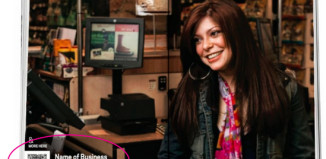There is no shortage of books, articles and experts that share the so-called secrets of creating that perfect relationship. They often focus on improving communication, having more satisfying sex and resolving conflicts–all crucial in having a successful relationship. But all these involve interacting with someone else, your partner or boyfriend. What does not get enough attention, however, is a discussion on how to develop a relationship with oneself, which is a prerequisite to effectively relating to others.
For some, this idea may seem elusive, selfish or even silly. But i believe that the healthiest relationships are comprised of two individuals who do not need the other, but rather want the other. They are not desperate for the other, but rather desire the other. They are comfortable being in or out of a relationship and, most importantly, know how to be in a relationship with oneself. and it does not matter if you are dating casually, in a committed relationship or single, you can develop a self-relationship regardless of your relational context.
How does one go about creating this type of relationship? It really is not that mysterious or mystical. It is simply being comfortable in your own skin regardless of the situation you are in. it is about being truthful with yourself and recognizing your strengths and idiosyncrasies while allowing others to have theirs. it is also recognizing your faults and limits (no, you are not perfect!) and not judging others for their own limitations and imperfections. it is about being secure in your own insecurities. Most importantly, it is about establishing and maintaining your own psychological boundaries.
When I was growing up, my mother would always tell me that I “end where someone else begins.” honestly, i never really grasped this concept until i was in my mid-twenties and in graduate school studying marriage and family therapy. it was there that this abstract me ending/you beginning thing started to click. as i studied relationships and the coupling process, it became clear that psychological boundaries play a central role in a relationship’s survival. psychological boundaries, like physical boundaries, represent both an ending and a beginning. But unlike a physical boundary, the terrain behind the psychological boundary is the private landscape of your feelings, your thoughts, your memories and your hopes and disappointments. and the kinds of boundaries we construct around ourselves help define who we are and determine the quality of our relationships, both with ourselves and others.
Psychological boundaries tend to fall along a continuum with the more rigid kind at one end and the more invisible type at the other. Those with rigid boundaries are slow to open up and they come across as distant, cutoff or even cold. Those on the other extreme with invisible or nearly nonexistent boundaries are quick to tell you just about everything you did not want to know about them. They come across as clingy and desperate. What these two extremes have in common is fear. They both fear others will reject them, so they either lock themselves up behind a stone wall, afraid of saying “yes,” or become a doormat afraid of ever saying “no.” The challenge is finding a healthy balance between these two.
Developing a relationship with oneself involves the delicate task of constructing boundaries that provide adequate protection while also providing opportunities for sharing and growth.
Boundaries tell us how far is too far and when it is time to risk a little more. Boundaries define who we are (how else do we know the unique shape of Texas but by its boundaries?) and in defining us, boundaries help to complete us and allow us to connect with others in a more authentic way.
What are some characteristics of healthy boundaries?
Saying no or yes and not over-reacting when someone tells you no. remember, “no” is a complete sentence.
Maintaining your identity and self-respect.
> Owning your share of a situation. As I tell the couples I work with, you are 100 percent responsible for your 50 percent of the relationship.
> Gradually sharing personal information when you are comfortable.
> Asking for help when you need it and taking responsibility for getting your needs met. Only you are responsible for your happiness.
> Expecting your partner to do his or her share of the work in a relationship.
> Not compromising your own values or integrity to win the approval of others.
Boundaries are a difficult business, especially in an intimate relationship where emotions can run high, but it is within these very types of relationships where we must keep our boundaries intact if we are to maintain our sense of self. i remember see- ing the movie Jerry Maguire and watching Tom cruise speak that famous, breathtaking line, “You complete me.” The line took my breath away, too, but not for sentimental reasons. You complete me? really? i understand the dramatic intent behind the movie line, but to put that statement in a more realistic context begs the question: Who was i before i met you? half of me? a third of me? no, thanks! i complete me and you complete you and together we can connect and have a more whole relationship.
As the poet rainer Maria rilke so eloquently wrote, “all companionship can consist only in the strengthening of two neighbor- ing solitudes…and when two people both give themselves up in order to come close to each other, there is no longer any ground beneath them and their being together is a continual falling.” To put it in more prosaic terms, when two people lose their own identity in a relationship, the relationship, instead of being more grounded and solid, is more reactive and chaotic. robert frost sums it up quite nicely: “Good fences make good neighbors.”
Did You Know?
Unhealthy boundaries between partners often result in codependent relationships.
The emotional boundaries between you and your family of origin have a direct impact on the type of relationship between you and your partner.


































